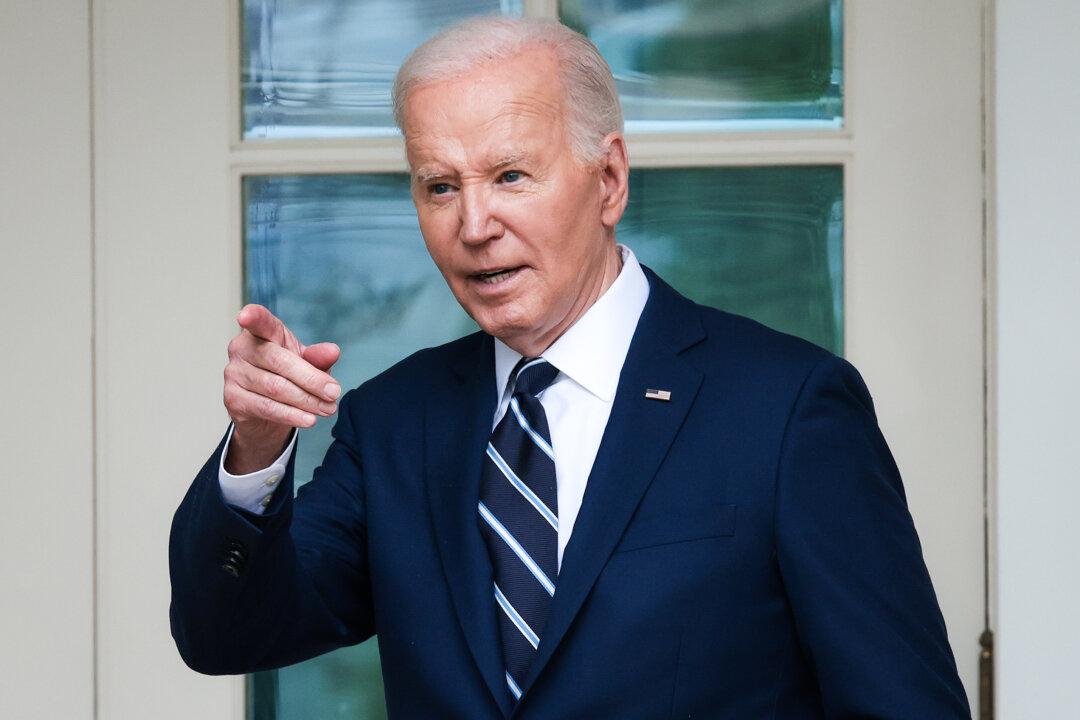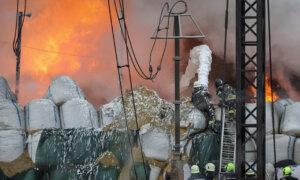The Biden administration will release 1 million barrels of gasoline from the Northeast Gasoline Supply Reserve to reduce pump prices ahead of the busy summer driving season, according to a statement sent by the White House.
Supplies will be released in 100,000-barrel quantities to facilitate a competitive bidding initiative to help curb gas prices, the Department of Energy confirmed. Gasoline will be sold from storage facilities in Maine and New Jersey, and retailers and terminals will receive the 42 million gallons of gasoline by no later than June 3, it noted.
Energy Secretary Jennifer Granholm noted that the strategic action will occur between the Memorial Day and Fourth of July holidays.
“The Biden–Harris Administration is laser focused on lowering prices at the pump for American families, especially as drivers hit the road for summer driving season,” Ms. Granholm said, noting that the White House is “ensuring sufficient supply flows to the tri-state and northeast at a time hardworking Americans need it the most.”
The Northeast Gasoline Supply Reserve was established in 2012 after Hurricane Sandy decimated refineries.
The announcement comes a month after President Joe Biden’s top economic adviser, Lael Brainard, told Semafor’s World Economy Summit that the White House would “make sure gas prices remain affordable.”
“There are, of course, things that have been done in the past, and we’ll continue to very closely monitor, make sure that gas prices remain affordable for so many American families going into the summer driving season,” Ms. Brainard said.
U.S. officials say the latest measure complements other ways President Biden has helped lower energy costs, including drawing down on roughly 40 percent from the Strategic Petroleum Reserve.
Emergency stockpiles totaled 367.811 million barrels for the week ending May 10, the highest level since April 2023, EIA data show.
In April, the Biden administration abruptly canceled plans to replenish emergency oil reserves, citing higher oil prices.

The White House also took a swipe at congressional Republicans in the latest announcement.
The State of Gas Prices
While the rise in the average price for a gallon of gasoline has slowed over the past month, the cost is nearly 2 percent higher than a year ago. According to the American Automobile Association (AAA), gas prices are up to $3.60, an increase of seven cents year-over-year.Unless there is a dramatic development in global energy markets, industry experts say gasoline prices will experience little change heading into the typically busy driving season.
“Most consumers will probably see pump prices barely budging for now,” AAA spokesperson Andrew Gross said.
On the demand side, gasoline consumption rose steadily last week, according to the latest EIA data. Total domestic gas demand was 8.87 million barrels for the week that ended on May 10, up from 8.79 million barrels in the previous week.
Persistent inflation might be finally forcing consumers to reconsider their spending habits, according to Phil Flynn, an energy strategist at The PRICE Futures Group.
“US gasoline demand has been a concern as there are fears that inflation is forcing changes in America’s driving behavior,” Mr. Flynn said in an analyst note. “Consumers are experiencing inflation unlike many have seen in their lifetimes and it seems to be taking its toll. Groceries or gasoline that’s the question that many Americans sadly must ask.”
Domestic crude production has been robust, topping an all-time high late last year. While output has slowed, production is hovering at about 13.1 million barrels per day.
Crude oil prices have eased over the past month as the war risk premium has waned. Despite the West Texas Intermediate (WTI) sliding below $80 per barrel on the New York Mercantile Exchange, the U.S. crude benchmark is still up by about 11 percent.
WTI prices had hit close to $88 per barrel this year amid geopolitical tensions before experiencing a pullback.
Global oil markets have become tighter as OPEC+ has reduced production.
But oil prices are in a wait-and-see mode as analysts brace for the June 1 OPEC+ meeting in Vienna. Officials will establish the next stage in the group’s output policy as the voluntary cuts expire at the end of next month.
The cartel has implemented multiple output reductions since 2022 and is currently slashing production by 5.86 million barrels per day, equal to nearly 6 percent of worldwide demand.
Last week, the Paris-based International Energy Agency (IEA) revised its demand growth forecasts down by 140,000 barrels per day to 1.1 million barrels per day. The downward adjustment was largely because of weaker demand projections from Europe. Global demand is anticipated to rebound to 1.2 million barrels per day in 2025, the IEA noted.
“The difference in demand growth numbers between the IEA and OPEC stands out,” Warren Patterson, head of commodities strategy at ING, wrote in a note. “OPEC is forecasting growth of more than 1.1m b/d [barrels per day] higher than the IEA numbers, which clearly will lead to very different views on the outlook for the market.”







